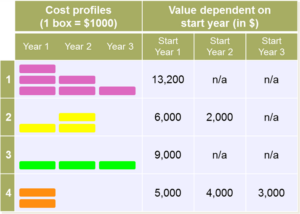Asset Planning & Decision Optimisation…Demystified (Part 1)
Is yours an asset-rich organisation? Then you know what it’s like to be faced with the challenges of managing an aging asset base (such as electricity transformers, gas pipes, rail track) under increasing financial pressure. Simply put, you’ve got to decide where to invest because odds are you don’t have the resources to do everything! You have to decide which of your capital and maintenance investments will get the go-ahead, based on which ones bring the highest value to the corporation and/or mitigate the most asset-related risk. You need to consider the required outputs from your assets, both now and in the future, and the options for delivering these outputs for the lowest whole life costs.
So how the heck do you go about deciding what gets priority attention? Asset Investment Planning and Management is about helping clients optimise their investment decisions so they can make the best use of their money. But what is optimisation, and how does it vary from traditional, less analytically advanced planning methods?
Valuing Investments: Create a Value Function
The term ”investment” is used here in the generic sense: it could be an asset replacement, a redesign, a partial change or refurbishment, a swap of assets, or even ”soft” investments such as retraining staff to operate an asset differently. So how do you quantify the value of each investment? And do it in a timely manner, given that the asset intensive world is usually driven by time-sensitive factors?
It’s simple. Create a value function! With this function, every benefit of the investment is rated on a normalised currency-neutral scale, weighted and evaluated in line with the corporate priorities. Value will often be a mix of tangible (e.g. financial efficiency savings or KPI improvements) and intangible benefits or risk mitigation (e.g. reputation, employee morale, safety and environmental risks). The goal for the organisation is to maximise value and pick the right combination of investments that will deliver the highest portfolio value to the corporation. This has to be done while honouring all the constraints tied to the portfolio (e.g. budgetary and resource constraints), and to individual investments and the assets affected by the investments (e.g. need to perform a task during a planned outage).

Sample asset investment portfolio
Are You Prioritising or Optimising?
Most corporations use relatively simple prioritisation methods to select the investments that will be approved for execution. To illustrate the difference, let’s play a game:
Our fictitious client is developing a three-year asset management plan and has a portfolio of four potential investments. The cost profiles are shown in this table, along with the value delivered by the investment which depends on which year the project commences.
I ran this game as part of the executive round tables at the recent Enterprise Asset Management conference, EAM Europe, in Copenhagen (hence the use of Lego – we were in Denmark after all). The delegates, mostly heads of Asset Management for European utilities, soon realised it wasn’t as simple as it appeared…
If the client has a budget constraint of just $3000 per year for the three years, can you find the optimal choice of investments?
Check out the answer in part 2…

